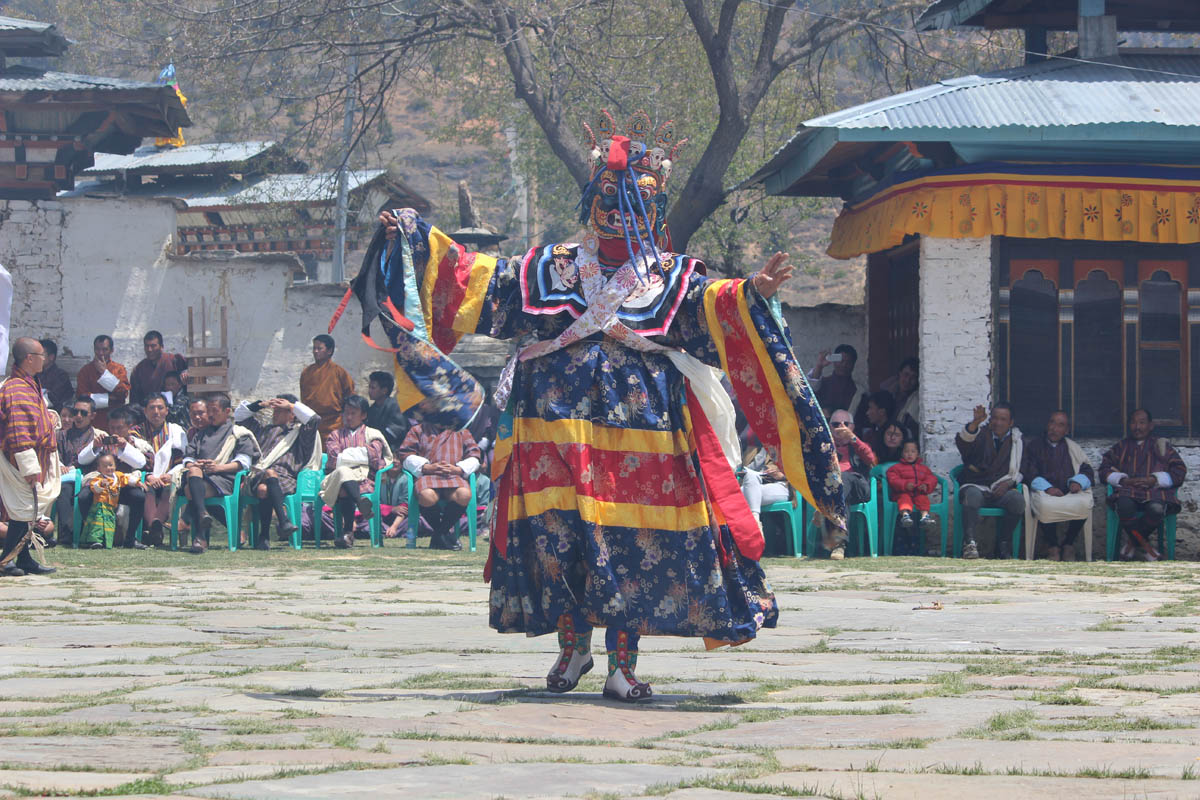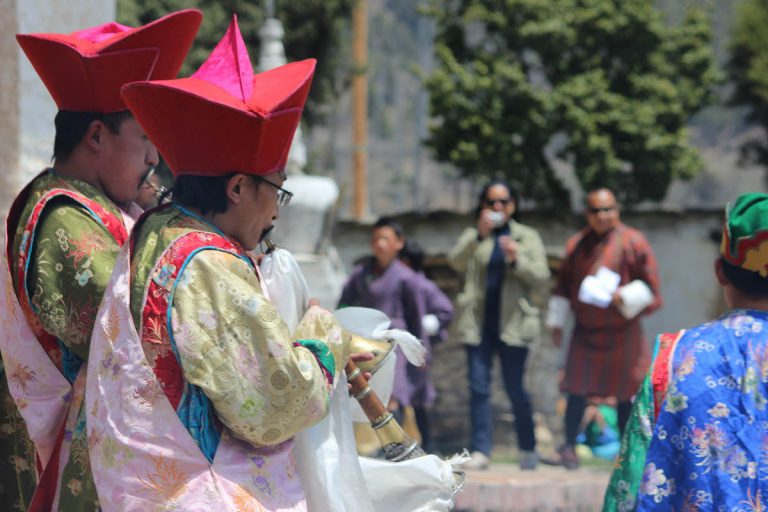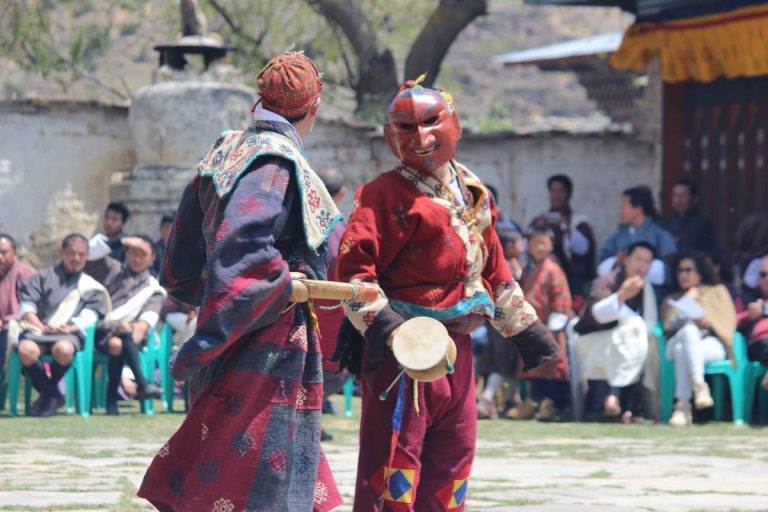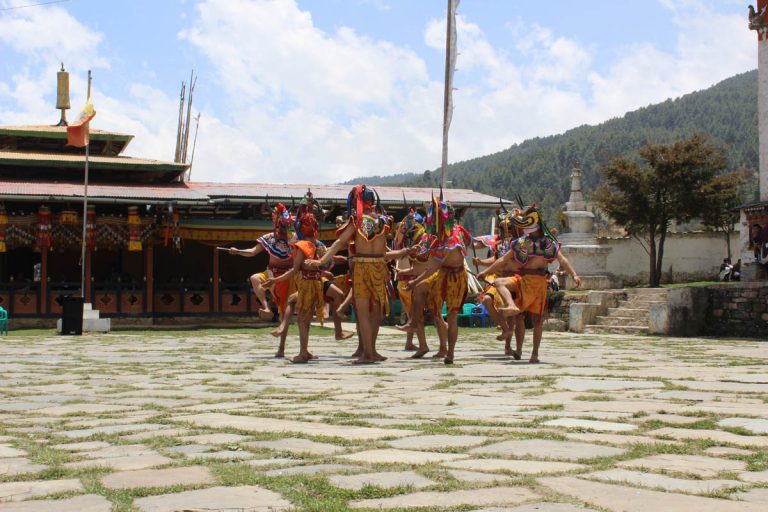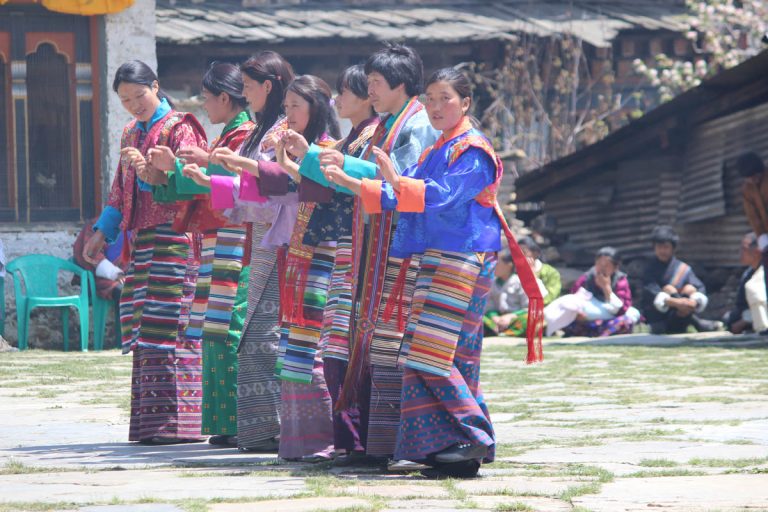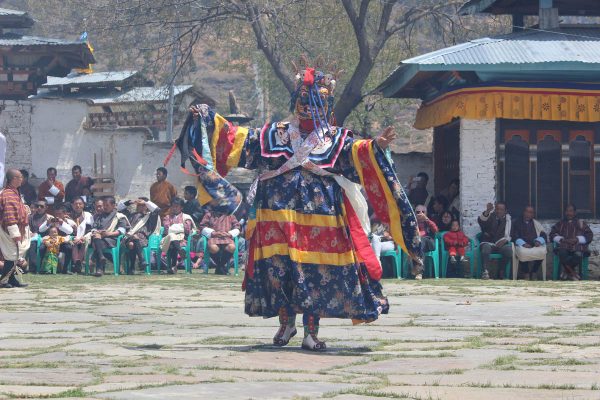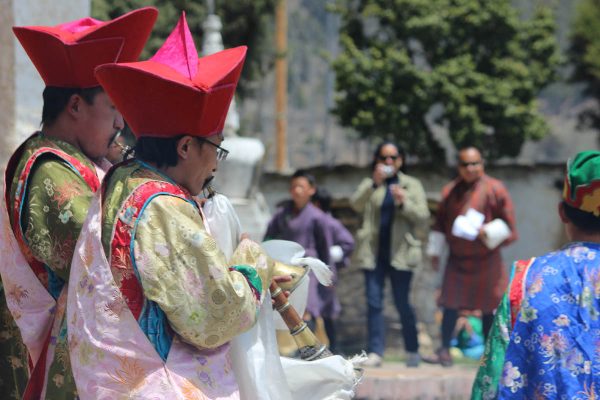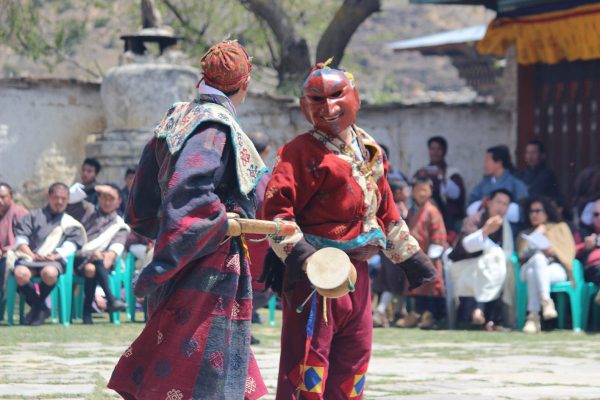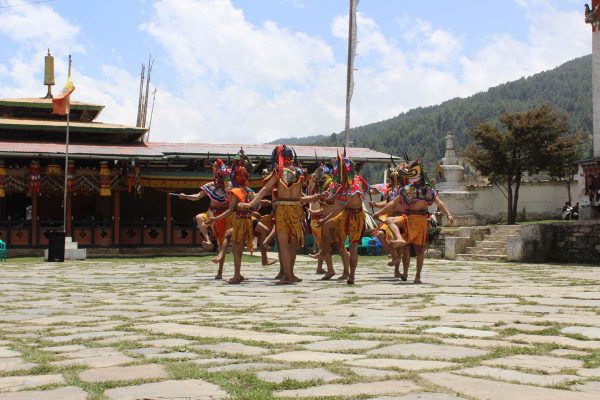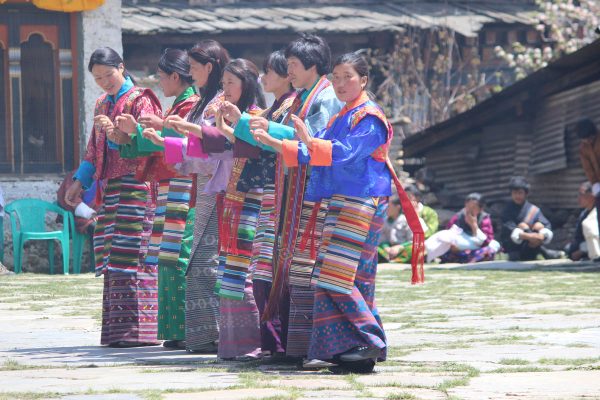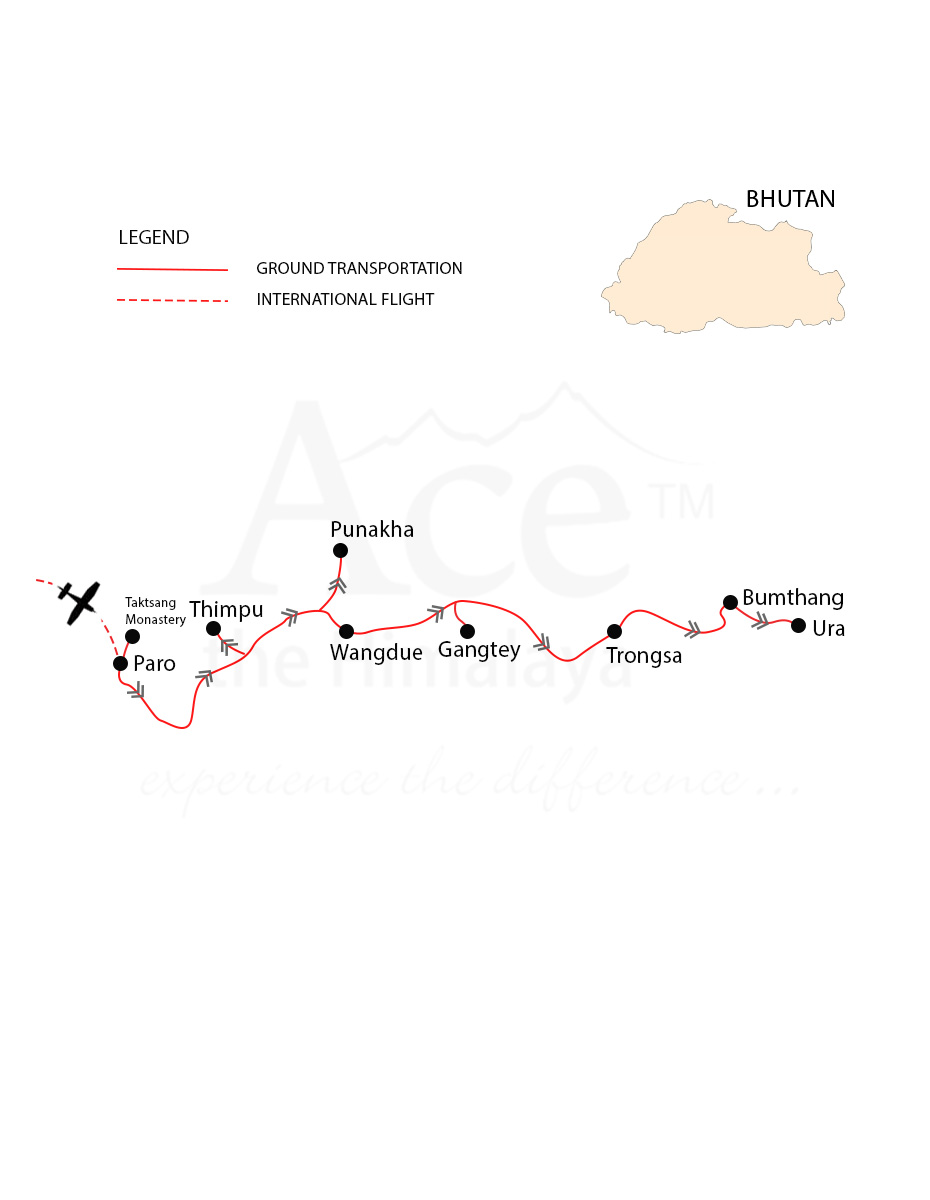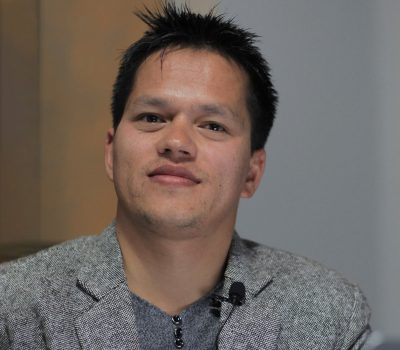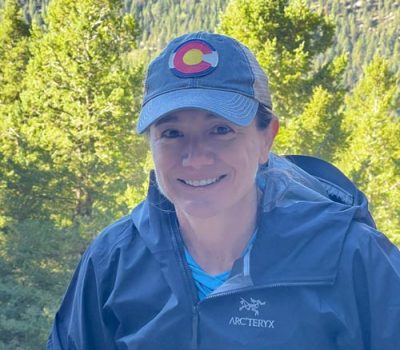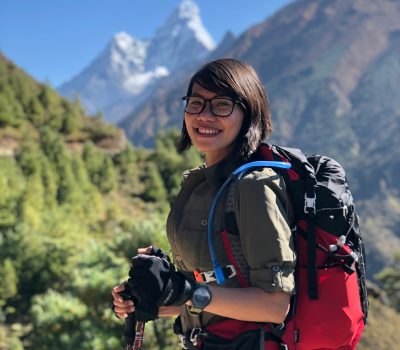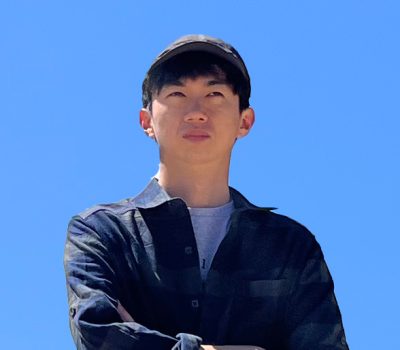Bhutan Ura Yakchoe - 12 Days
Set against a backdrop of timeless mountain villages, the Ura Yakchoe invites you to witness Bhutan’s spiritual heartbeat in one of its most enchanting forms, a captivating display of sacred rituals, spiritual blessings, and religious purification.
Trip Highlights
- Immerse in the unique culture of Bhutan’s iconic destinations: Thimphu, Punakha, Bumthang, Ura, and Paro
- Hike to Bhutan’s most sacred and iconic cliffside monastery, Taktsang Monastery (Tiger’s Nest)
- Explore the historical Dzong of Bhutan
- Experience the rich culture in the colorful festival celebrations
- Immerse in the Ura Yakchoe Festival activities
- Witness sacred mask dances and vibrant costumes reflecting Bhutan’s timeless spiritual heritage.
- Enjoy the breathtaking Himalayan vistas and serene alpine valleys from scenic viewpoints
- Stroll through local markets showcasing traditional handcrafted Bhutanese arts and crafts
Trip Overview
At the heart of this journey lies the Ura Yakchoe Festival, a deeply spiritual celebration where blessings are invoked, and ancient rituals of purification unfold through vibrant masked dances and sacred chants.
Bhutan’s Tsechus are not mere performances; they are living expressions of devotion, wrapped in a whirlwind of color, music, and myth that seem to leap straight out of the medieval past.
As we journey through the breathtaking valleys of Punakha, Bumthang, Ura, and Wangdue, you’ll find yourself surrounded by landscapes so pristine and poetic, that they truly defy words.
In May, Bhutan’s natural beauty reaches its peak. Nestled in the Eastern Himalayas, the kingdom is ranked among the world’s top ten biodiversity hotspots.
More than 600 species of wild orchids bloom across hillsides, alongside 50 varieties of rhododendrons, the rare and revered Blue Poppy, and an abundance of medicinal and high-altitude plants.
Over 70% of the country is covered in untouched forests, where crystal-clear rivers dance past terraced rice fields and lush, flower-filled meadows.
Enclosed by soaring Himalayan peaks, Bhutan is a land untouched by time where serenity is not just a feeling but a way of life.
This handcrafted itinerary brings you the very best of the kingdom: gentle cultural hikes to centuries-old dzongs and temples, visits to vibrant weekend markets, warm encounters in remote villages, and unforgettable moments of Bhutanese hospitality that will stay with you long after the journey ends.
Short Itinerary
April 27 – Arrival at Paro Airport (2250 m/7,382 ft) then transfer to Thimphu (2,330 m/7,644 ft) – 1 to 2 hours drive. Overnight at a 3-star hotel.
April 28 – Sightseeing around Thimphu (2,330 m/7,644 ft). Overnight at a 3-star hotel.
April 29 – Drive to Punakha (1,200 m/3,937 ft) from Thimpu – 2 to 3 hours drive. Overnight at a 3-star hotel.
April 30 – Drive to Bumthang (2,700 m/8,858 ft) from Punakha – 6 to 7 hours drive Overnight at a 3-star hotel.
April 30 – Full-day exploration at Bumthang (2,700 m/8,858 ft). Overnight at a 3-star hotel.
May 01 – Drive to Ura (3,100 m/10,170 ft) from Bumthang then exploration at Ura Yakchoe Festival – 2 to 3 hours drive. Overnight at a 3-star hotel.
May 02 – Drive to Bumthang (2,700 m/8,858 ft) from Ura – 2 hours drive. Overnight at a 3-star hotel.
May 03 – Drive to Wangdue (1,270 m/4,167 ft) from Bumthang – 5 to 6 hours drive. Overnight at a 3-star hotel.
May 04 – Drive to Gangtey/Phobjikha (2,900 m/9,514 ft) from Wangdue – 2 to 3 hours drive. Overnight at a 3-star hotel.
May 05 – Drive to Paro via Thimphu (2,330 m/7,644 ft) from Gangtey – 5 to 6 hours drive. Overnight at a 3-star hotel.
May 06 – Excursion to Taktsang Monastery/ Tigers Nest Monastery (3,120 m/10,232 ft) – 20 minutes’ drive then 5-6 hours hike. Overnight at a 3-star hotel.
May 07 – Transfer to the international airport for your final departure.
Departures & Availability
Please select the fixed departure date from the calendar below to join this festival tour. As there is only one scheduled date aligned with the festival, simply follow the steps to confirm your booking.
Please select the fixed departure date from the calendar below to join this festival tour. As there is only one scheduled date aligned with the festival, simply follow the steps to confirm your booking.
Looking for personalized experience? We organize privately guided journey which is mainly designed to fit your taste and interest. Please fill out the form below to get started.
Price Includes
Accommodation
- Standard government-approved 3-star accommodation (in twin-sharing rooms) for the duration of the tour.
Meals and Drinking Water
- Full-board meals – 11 breakfasts, 11 lunches, 11 dinners, and tea & snacks – for the duration of your stay.
- Unlimited supply of packaged drinking water for the duration of the tour.
Transportation
- All (international and domestic) airport transfers on a tourist vehicle
- Private transportation and a designated driver within Bhutan. SUV vehicles for solo/pairs, Hiace vans for small groups, and Coaster buses for larger groups.
Guide and Staff
- Licensed English-speaking and first-aid experienced Bhutanese tour guides. Additional or assistant guides are provided for groups over 11 or when special support is needed, such as for senior travelers.
- Guided city tour in Paro by private tourist vehicle.
- The required number of local staff and porters to carry your luggage during the trip.
- Wages, accommodation, meals, gear, insurance, and medications for all staff
Permits and Fees
- Bhutan visa fees and processing assistance.
- All route access and monument entry permits and fees.
- Monument and museum entrance fees for all sightseeing locations are detailed in the itinerary.
- Government-mandated Sustainable Development Fee of US$100 per person per night.
Benefits and Takeaways
- Country presentation and tour Briefing on the evening of Day 1 with welcome drinks.
- Cultural afternoon/evening sessions with traditional masks and folk dances (with beverages). [Only for group tours.]
- 1 Ace the Himalaya’s duffel/kit bag, sun hat, and Buff (Neck Gaiter) if your flight originates from Kathmandu, Nepal.
Administrative
- All government taxes, official expenses, and tourist service charges.
Price Excludes
- All international airfare, including Druk Air flights and airport departure tax
- Travel insurance, along with high-altitude emergency evacuation coverage.
- Alcoholic drinks and beverages.
- Tips for tour guides, porters, drivers, hotel lobby, and restaurants. (Tipping is expected).
- All items of a personal nature like laundry, gear, shopping, etc.
- Any expenses other than the Price Include section.
Detailed Itinerary
Expand AllDay 01: April 27 - Arrive in Paro and transfer to Thimphu
You’ll fly into Paro International Airport, Bhutan’s only international gateway, with direct flights from cities like Kathmandu, Bangkok, New Delhi, and Dhaka.
For the smoothest and most scenic experience, we recommend flying Kathmandu–Paro–Kathmandu.
It not only makes logistics easier but also allows us to personally greet you with gratitude and offer some thoughtful travel gear or souvenirs, including a duffle bag, sun hat, and neck gaiter, which are yours to keep as part of the journey.
As you soar through the Himalayas, you’ll witness jaw-dropping views of snow-capped giants, including Mount Everest, before landing in the stunning Paro Valley at 2,250 m (7,382 ft).
This fertile region is known for its golden rice fields, apple orchards, and fresh organic produce. Once you land, our airport representative will be there to welcome you with a traditional silk khada, a Bhutanese gesture of good luck and warm hospitality.
After completing arrival formalities, you’ll embark on a scenic one to two-hour drive to Thimphu, Bhutan’s charming capital.
As you journey onward, you’ll travel past lush terraced rice fields, traditional farmhouses, and charming mountain villages, each offering panoramic views of serene valleys.
Arriving in Thimphu, the quiet charm of Bhutanese life welcomes you. With just a few main streets lined with local shops and cozy cafes, the atmosphere is peaceful and unhurried, offering a glimpse into the Bhutan’s tranquil way of life.
Day 02: April 28 - Sightseeing around Thimphu
After a hearty breakfast, we set off for a captivating day of cultural immersion in Bhutan’s charming capital, Thimphu.
Our morning begins with visits to the House of Incense and the House of Paper, where you’ll witness the timeless artistry of crafting incense and handmade paper from natural Bhutanese materials,
Next, we continue to the National Memorial Chorten, a revered whitewashed stupa built in honor of Bhutan’s beloved Third King.
Here, amid the gentle murmurs of prayer and the rhythmic spinning of prayer wheels by devoted locals, you’ll experience the living spiritual heartbeat of Thimphu.
After lunch, our exploration deepens at the Textile Museum, where Bhutan’s remarkable weaving heritage comes to life.
Explore intricate ceremonial textiles, vibrant thangkas, and sacred cloths, with an upper gallery showcasing exquisite pieces once worn by the Royal Family.
We then visit the serene Changlimithang Lhakhang, followed by a stroll through the Handicrafts Emporium, where you’ll find an array of beautifully crafted local treasures.
Our enriching day concludes with a visit to the National Library, where centuries-old manuscripts, sacred Buddhist texts, and intricately illustrated religious scrolls await, offering a profound glimpse into the kingdom’s spiritual and literary heritage.
Day 03: April 29 - Drive to Punakha from Thimpu
After a warm breakfast, we bid farewell to Thimphu and set out on a scenic journey toward the serene Punakha Valley.
Our drive winds through fragrant pine and cedar forests, their branches draped with wisps of delicate lichen.
As we climb higher, bursts of rhododendrons, magnolias, and evergreen junipers welcome us along the roadside, accompanied by the melodic songs of rare Himalayan birdlife.
Soon, we arrive at the breathtaking Dochula Pass (3,050 m/10,006 ft), where if the weather permits, on a clear day the snowy peaks of the Himalayan range stretch endlessly across the horizon.
We’ll pause here to sip a cup of hot tea, breathe in the crisp mountain air, and wander among the 108 white chortens that crown the pass.
Descending from Dochula, we follow a winding series of bends into the lush, fertile Lobesa Valley. Here, a short and serene walk through terraced rice fields leads us to Chimi Lhakhang also known as the famed Temple of Fertility.
Built in honor of Bhutan’s beloved and eccentric saint, Drukpa Kuenley (the “Divine Madman”), this hilltop temple is both iconic and deeply spiritual. People from across Bhutan and beyond visit here seeking special blessings of fertiflity.
By afternoon, we reach Punakha, where we check into our hotel for a hearty lunch and some time to relax.
Later, we step back in time as we explore the grand Punakha Dzong, an architectural masterpiece perched at the confluence of the Mo Chhu (Mother River) and Po Chhu (Father River).
With its intricate wooden carvings, gleaming golden spires, and majestic whitewashed walls, the dzong stands as one of Bhutan’s most beautiful and historically significant fortresses.
If time allow, we’ll end the day with a rewarding hike to Khamsum Yulley Namgyal Chorten. The 45-minute trail meanders through vibrant rice terraces and traditional farmhouses, ultimately rewarding us with sweeping panoramic views of the Punakha Valley below.
Day 04: April 30 - Drive to Bumthang from Punakha
Today, we embark early on one of Bhutan’s most scenic and memorable journeys, a stunning drive to the spiritual heartland of Bumthang.
Our route winds through awe-inspiring mountain landscapes, verdant valleys, and dramatic high-mountain passes, with an overall drive time of around 6 to 7 hours via Trongsa.
We begin our ascent from Wangdue, an important regional hub in Western Bhutan. As we climb higher, the landscape gradually transforms from lush forests to rugged alpine vistas.
Soon, we reach the windswept heights of Pele La Pass (3,300 m/10,826 ft). Here, vibrant fluttering prayer flags dance in the crisp mountain breeze, and if the weather permits you’ll be rewarded with sweeping vistas of the distant Himalayan range including Mount Chomolhari (7,314 m/23,996 ft), one of Bhutan’s most sacred peaks.
Descending through winding mountain roads, we pause at Chendebji Chorten, an ancient whitewashed stupa built centuries ago to subdue a local demon.
Our journey continues to the historic town of Trongsa, where we explore the commanding Trongsa Dzong. You’ll feel the centuries of history within its grand courtyards and towering walls.
After soaking in Trongsa’s grandeur, we resume our drive, ascending once more toward the Yotong La Pass (3,400 m/11,155 ft).
Here, expansive views of panoramic valleys and snow-draped peaks unfold before us, rewarding our journey with unforgettable views.
Finally, we descend into the enchanting Bumthang Valley, a place often described as the “spiritual heart of Bhutan.” You’ll sense a profound tranquility in this sacred land of ancient monasteries, timeless villages, and untouched natural beauty.
Day 05: April 31 - Full-day exploration at Bumthang Tangi Mani festival
After a nourishing breakfast, we set out on a culturally rich sightseeing tour through the sacred heart of Bumthang.
Our journey begins at Tamshing Monastery, one of Bhutan’s oldest and most important monastic institutions, founded in the 16th century by the revered spiritual master Terton Pema Lingpa.
Here, you’ll step into a living history of Bhutanese Buddhism and witness murals and sacred relics that have withstood the centuries.
We continue our journey to Kurjey Lhakhang, a temple built around a sacred cave where Guru Rinpoche (Padmasambhava) meditated and left his body imprinted on a rock after subduing a local spirit.
Our trail leads us next to Jambay Lhakhang, a serene and ancient temple dating to the 7th century.
Believed to have been built by Tibetan King Songtsen Gampo as part of his grand mission to subdue malevolent forces across the Himalayas.
We wrap up the morning at Jakar Dzong, known as the “Fortress of the White Bird.” Perched on a ridge with commanding views over the Bumthang valley, this striking fortress serves as a reminder of Bhutan’s blend of governance and spirituality.
In the afternoon, we venture eastward to the mystical Membar Tsho also known as the “Burning Lake.”
According to legend, this sacred site was where Pema Lingpa retrieved hidden religious treasures (terma) from beneath the waters while miraculously keeping a burning lamp alight.
We end our day on with a visit to the Swiss Farm, a charming enterprise that blends Bhutanese tradition with European touch.
Here, you’ll have the opportunity to sample locally brewed wines, artisan cheeses, apple brandy, and refreshing cider juices.
As the sun sets over the valley, we return to our accommodation for a restful evening, hearts and minds enriched by a day steeped in Bhutan’s living heritage.
Day 06: May 01 - Drive to Ura from Bumthang then explore at Ura Yakchoe Festival
After breakfast, we set out on a scenic drive to the sacred Ura Valley. Today, we have the rare privilege of witnessing the Ura Yakchoe Festival, a mesmerizing celebration of Bhutanese spirituality and community.
Throughout the day, Bhutanese people gather in their finest traditional attire and jewelry, filling the valley with color, joy, and reverence.
As we join the festivities, you’ll feel the serene Bhutan’s living culture. The air hums with energy as masked dancers, embodying both glorious deities and fearsome demons performed with detailed choreography along with each step of the “Thunderbolt Dance”.
The spectacle is both exhilarating and moving, offering us a profound glimpse into Bhutan’s unwavering devotion and spiritual harmony.
As we involve with locals, you’ll witness the essence of Bhutanese life. The Ura Yakchoe is truly an unforgettable highlight of our journey.
Day 07: May 02 - Drive to Bumthang from Ura
This morning, we return to the Ura Yakchoe Festival to meet with the Head Lama of Ura, whose presence brings an utmost layer of spiritual significance to the day.
As the festivities continue, keep an eye out for the playful Atsara, the festival clown, whose mischievous antics, witty humor, and lively mimicry add joy and lightness to the sacred proceedings.
Throughout the day, festival deities are invoked through ritual dances and benedictions, believed to bring good fortune and cleanse away misfortune.
The energy of the crowd, the vibrant costumes, and the rhythmic sounds of cymbals, horns, and chants create a truly immersive experience.
In the afternoon, we bid farewell to Ura Valley and drive back to Bumthang, where the evening is yours to relax and rejuvenate.
Day 08: May 03 - Drive to Wangdue via Trongsa from Bumthang
After a hearty breakfast, we begin our westward journey from Bumthang toward the serene Wangdue Valley.
As we wind through towering mountain passes and descend into lush valleys, you’ll be immersed in an ever-changing tapestry of scenic wonders.
The journey rewards you with dramatic ridgelines, lush forests, cascading rivers, and traditional villages nestled into the hillsides.
A highlight of the journey is our stop in Trongsa, where we may be lucky enough to witness archery match, Bhutan’s national sport.
After an enriching 5–6 hour drive, we arrive in the tranquil Wangdue Valley, where rivers meander through fertile plains and terraced hills rise toward the horizon.
We check into our comfortable hotel for a restful evening natural beauty of Bhutan’s countryside.
Day 09: May 04 - Drive to Gangtey/Phobjikha from Wangdue
This morning, we set off on a scenic drive toward Gangtey, a hidden jewel nestled in the side of Bhutan’s mystical Black Mountains.
Along the way, we pause to visit the Wangdue Phodrang Dzong perched above the Punatsangchu River. Steeped in history and architectural grandeur, this dzong offers sweeping views of the valley below.
Our journey continues through winding mountain roads until we reach the peaceful Gangtey Valley, home to the renowned 17th-century Gangtey Gompa, one of Bhutan’s most significant Nyingma monasteries.
Perched on a forested ridge, the monastery is often described as “the most beautiful valley in the Himalayas.”
This breathtaking glacial valley is also the winter sanctuary of the revered Black-Necked Cranes, which migrate here each year from the windswept Tibetan Plateau.
In the afternoon, we enjoy a gentle walk through the valley’s serene meadows. You will also visit the Black-Necked Crane Information Centre, where insightful exhibits share the story of these rare creatures.
By the end of the day, we return to our accommodation for rest and needed relaxation.
Day 10: May 05 - Drive to Paro via Thimphu from Gangtey
After a warm breakfast, we begin our return journey westward to Paro, retracing our path through Bhutan’s tranquil valleys and ever-changing landscapes.
As we wind through mountain roads and verdant countryside, we’ll pause in Thimphu for a relaxed lunch. With a population of approximately 114,551, Thimphu remains the world’s only capital city without traffic lights.
Along the way, we may visit a lively local market or stop to witness a spirited archery match, where locals passionately engage in Bhutan’s beloved national sport.
By late afternoon, we arrive in Paro, where you can settle in and unwind at your hotel. The evening is yours to rejuvenate and explore around the serene valley.
Day 11: May 06 – Excursion to Taktsang Monastery/ Tigers Nest Monastery
After an early breakfast, we set out together on one of Bhutan’s most iconic adventures, a scenic hike to the legendary Taktsang Monastery, famously known as the Tiger’s Nest.
Our memorable 5–6 hour round-trip hike winds through fragrant pine and rhododendron forests, where fluttering prayer flags and crisp mountain air create a profound spiritual ambiance.
Along the trail, we pause at a charming mountain-side cafeteria, perfectly nestled to offer mesmerizing views of the monastery clinging dramatically to a sheer cliffside, perched 900 meters above the Paro Valley floor.
The Taktsang Monastery, built in the 17th century, is among Bhutan’s most sacred pilgrimage sites.
According to legend, Guru Padmasambhava (Guru Rinpoche), who brought Buddhism to Bhutan, arrived here on the back of a flying tigress and meditated in a cliffside cave for three months.
Though partially damaged by fire in 1998, the monastery has been lovingly restored to its original splendor and remains a powerful symbol of Bhutan’s spiritual heritage.
After descending, we continue to Kyichu Lhakhang, one of Bhutan’s oldest and holiest temples, founded in the 7th century by Tibetan King Songtsen Gampo.
As the day winds down, we take a leisurely stroll along Paro’s charming main street, where you can browse colorful shops and local cafes, and pick up handmade Bhutanese crafts and souvenirs.
Day 12: May 07 - Transfer to the international airport for your final departure
After an early breakfast at your hotel, your unforgettable Bhutan journey comes to a close as we transfer you to Paro International Airport for your onward flight.
Our friendly representative will assist you with all departure formalities and ensure a smooth check-in process before bidding you with traditional Bhutanese farewell.
Gears and Equipment
All you need to bring for this Bhutan Ura Yakchoe Festival Tour is simply some comfortable clothes; there is no requirement for special equipment on the tour.
However, for your ease, the following gives you a general idea about the personal items you need to manage for the trip. The personal items referred to here are optional and depend upon your choice.
The most important factor to be considered while choosing the types of equipment and your Bag-pack is the time of the year you are traveling.
In a tour, the vehicle transfers all the heavy items and equipment. But the Personal belongings of the clients which are required at any moment like money, water bottle, camera, sunscreen, and toilet paper, etc. should be carried by yourself.
It is therefore advisable that you pack your personal belongings into your daypack.
If you’re flying from Kathmandu, we’ll provide you with a complimentary, windproof duffel bag for the trip. This bag will be carried by porters or mountain transportation like mules, and horses in high-altitude regions and is yours to keep after the trip.
List of Recommended Equipment
- Duffel or Rucksack bag or suitcase (We will provide one complimentary ACE duffel bag for you to keep.)
- Daypack
- Warm wool or synthetic hat that cover your ears (only if you are travelling in the cold season i.e January, February and December)
- Goggles or sunglasses for sunbeam, dust and wind.
- A neck warmer is another piece of gear for extra warmth if you feel you will need it and is for cold season i.e January, February and December.(optional)
- 1 pair warm gloves (This is required if your are travelling in cold season i.e January, February and December).
- T-shirts (2).
- Waterproof (preferably breathable fabric) shell jacket (preferable if you are travelling in rainy season from June to September.)
- 1 pair cotton pants (loose jeans/khakis), 1 pair shorts.
- 2 pairs lightweight long underwear/thermals (if you are traveling in winter January, February and December).
- 2 pairs of liner socks, synthetic or capilene.
- 1 pair light camping shoes or sneakers..
- 1 pair sandals (Optional).
Medicines and First Aid Kits
(Please note our guide will also carry the first aid kit bag during the trek. However we still recommend you to bring your personal first aid kit as well)
- Extra Strength Excedrin for altitude related headaches.
- Ibuprofen for general aches and pains.
- Immodium or Pepto bismol capsules for upset stomach or diarrhea.
- 1 small personal sized first-aid kit with blister treatments such as mole skin, band-aids, some waterproof tape, anti-infection ointments, etc. Your guides will have more extensive medical gear, but you should have the basics for general use.
Other Essentials
- Passport and extra passport photos (4 copies).
- Airline ticket (Please make a copy and leave on at our office in KTM just in case if you need to change the date of your).
- Durable wallet / pouch for travel documents, money & passport.
- Lip balm. At least SPF 20, 2 sticks. A string taped to the stick is helpful, to hang around your neck and some are now being sold with a cord already attached. Handy as it avoids you from having to stop and look for it.
- Sunscreen.
- Toiletry kit. Be sure to include toilet paper stored in a plastic bag, hand wipes, and liquid hand sanitizer, towel, soap, etc.
- 2 bandanas.
This list is only a guide. While you are required to bring everything on this list, there are numerous options, brands, and versions of each piece of equipment. Use your experience and the listed features to find the best gear for you.
FAQs for Bhutan Ura Yakchoe
General
Is this a guaranteed departure for dates listed on the website?
Yes, this trip offers guaranteed departures on the specified dates. You can view and select available departure dates directly from the booking calendar on our website. Each listed date is confirmed to operate. Furthermore, Bhutan trips must be booked at least one month in advance due to travel regulations and logistics.
Additionally, we provide group discounts based on the size of your group. The larger your group, the more substantial the discount, enhancing your travel experience.
Are Bhutan trips available as group departures or only as private journeys?
Normally, most of the Bhutan trips are private departures, meaning they are organized based on preferred dates, an excellent option for families or friends traveling together.
However, if you’re interested in an open-group departure for Bhutan, please inquire with us at the time of booking.
Why travel with Ace the Himalaya?
Ace has a reputation for successfully leading treks with knowledgeable leaders and staff taking care of all your travel needs. We are a certified sustainable travel company that also endorses the idea of giving back to the community by participating in various philanthropic activities. Here are 17 reasons to hike with Ace the Himalaya.
What essential documents do I need to bring with me on tours?
Here are some documents that you will need to carry with you:
- Valid Passport – must be valid for up to 6 months after you return from your tour (Keep a separate photocopy)
- Travel insurance (Keep a separate photocopy)
- Cash and Traveller’s Cheques (Keep numbers and proof of purchase separately)
- Flight tickets
- Emergency contact numbers for T/C’s, banks, insurance, family contacts
Weather and Temperature
What is the best season for this tour?
The Ura Yakchoe Festival takes place in Ura Village, nestled in the picturesque Ura Valley of Bumthang District.
The best time to experience this tour is in May when the entire valley comes alive with colorful dances, spiritual rituals, and vibrant local celebrations.
What is the weather and temperature like on the tour?
It depends on the season you’re traveling. During winter (December to February), it is colder at night and relatively warmer during the day, with the temperature ranging from 4°C at night to 22°C. Between March and May, the weather stays perfect as the temperature averages 25°C during the day.
From September to December, following the monsoon, the temperature gets cooler and allows for a great time to travel. The average temperature during this season is 20°C. The vehicles and the hotels during the trip will be air-conditioned making your travel very comfortable.
Arrival and Visas
Do I need to obtain VISA for Bhutan?
We will handle the visa procedures for you. The Govt. will sanction the VISA only after the receipt of full payment in advance. The visa fee is included with our tour price. Actual Bhutan VISA will be stamped in your passport on arrival on Paro airport. Without visa clearance number, tourists cannot board the flight or enter the country.
The Ministry of Foreign Affairs forwards a copy of this visa clearance to the concerned Druk Air stations and other entry points; we also fax a copy of the visa clearance document to our clients for their reference. While the actual visa is stamped on arrival, the initial visa clearance is also required at the time of issuing Druk Air Tickets.
All you need is to carry 2 copies of original passport-sized photographs, which are required on arrival in the country. Please e-mail us the clear color copy of the passport for the visa procedures.
Will somebody come to pick me up at the airport upon my arrival?
Yes, our airport representative will be there to greet you at the airport. S/he will be displaying a sign board with your name on it at outside the airport terminal. Upon arrival, you will be transferred to your hotel by our tourist vehicle.
Payments and extra costs
How much additional money do I need per day?
It depends on your personal spending habits. In general, all meals, accommodation, and hot drinks are included in the trip price.
You may want to budget around USD 10 to USD 20 per day for additional beverages such as soft drinks, chocolates, or occasional treats.
For personal expenses such as laundry, shopping, bar bills, and tips the amount will vary depending on individual preferences and consumption. These costs are not included in the package and should be planned based on your experience and spending habits.
Can I use credit cards in the places visited in tour?
There are just a few ATM’s in Bhutan for credit cards (Master card / Maestro) & only a few establishments in Bhutan accept credit card payments hence US Dollars (cash or Amex traveler’s cheques) or Euros Cash is suggested and convenient to cover any personal expenses (eg. beverages, laundry, phone bills, tipping, shopping, etc) that the Pax may make in the Kingdom.
1US$ is equivalent to Nu. 84.33 & 1 Euro is equivalent to Nu.95.54 as of today (the day we are writing this text). NU= Ngultrum, the Bhutanese currency.
Who Can Participate?
How fit do I have to be and is this tour for me?
This culture and festive tour is suitable for any kind of travelers ranging from all age groups, no previous experience is required. It’s designed to be accessible and enjoyable for anyone with a general level of health and mobility.
That said, engaging in light physical activity such as aerobics or walking in the weeks can help you feel more comfortable and enhance your overall experience, especially during short hikes or walks included in the itinerary.
Accommodation
What sort of accommodation can I expect in tour?
Accommodation includes a combination of comfortable hotel stays. In cities like Thimphu, Paro, or other regions, you are accommodated in a minimum of 3-star deluxe hotels.
Upgrades to 4-star semi-luxury or 5-star luxury hotels can be arranged upon request, with applicable supplement charges.
What sort of food can I expect in tour?
Most restaurants in Bhutan offer an eclectic mix of Bhutanese, Nepalese, Indian, Chinese, Western, and Continental cuisine, ensuring there’s always plenty to choose from. Local Bhutanese dishes tend to be spicy, similar to Indian cuisine, and provide a rich cultural culinary experience.
Is the water available drinkable? Do I need to bring purifying tablets/filter?
The trip price included the drinking water for the all Bhutan trip. You don’t need to bring any bring purifying tablets/filter or pay for the water.
Will it be possible to get any clothes washed/Laundry ?
Laundry service is easily available at your hotel. Please note that laundry service is not included in the package price.
Can I charge my digital camera or other equipments on my trip?
These facilities will be available in most of the places in your hotel. Remember to bring travel adapters!
Health and Safety
Is Ace the Himalaya's staff insured?
Our company insures all our trekking staff members, including guides, cooks, Sherpa, and porters. Please browse through our legal docment page to view insurance details.
What immunizations will I need?
No vaccinations are compulsory for traveling in Nepal, but we do recommend you are covered for diphtheria & TB, hepatitis A, hepatitis B, *malaria, typhoid, polio and tetanus.
We also recommend:
- A dental check-up prior to traveling
- That you know your blood group in case of emergency
If you have any pre-existing medical conditions which might affect you on tour, you make these known to your tour leader and Ace the Himalaya at the time of your booking.
Practical Matters
What is your cancellation policy?
Notice should be provided 20 days before the trip start date in case of cancellation. The trip can be canceled for justifiable reasons. Once the trip is canceled, a fee of 30% of the trip cost is retained for administrative costs.
However, the trip amount is entirely non-refundable if the cancellation is not made before the 20 days as per our terms and conditions. For submitting a claim to your insurance company after the cancellation, we can assist with documentation such as a receipt of monies paid. Refund will not be provided for unused accommodation in case of trip cancellation caused by personal reasons/sickness/weather.
More information about our cancellation policy can be found here in Terms and Conditions page.
Do I need to tip my guide and porters? How much would that be?
This is a difficult thing to gauge. We have seen everything from USD 20 to USD 1000 per person for guides and porters. Tipping is not required, but a small gesture of thanks to your guides and local porters thanking and appreciating their help. The level of the tip should reflect the level of satisfaction from and personal involvement with your guide.
When do you provide an assistant guide for group tours?
An additional guide is provided for groups of 12 or more participants. However, we may also assign an assistant guide depending on the age group of the participants (e.g., for senior citizens) or if special assistance is required.
Is the government-mandated Sustainable Development Fee (SDF) of US$100 per person per night still applicable?
All SDF charges are included in your package, so you do not need to pay anything extra.
The government-mandated SDF is US$100 per person per night. Children under 12 years old are eligible for a reduced rate of US$50 per child per night, and there is no SDF charged for children under 5 years of age.
Are there any communication facilities during the trip?
Telephones and Internet and international calls are readily available in most of the town for this trip.
Are there any photography restrictions?
You will have many photo opportunities during the trip. Please ask for permission before taking a person’s photo. Photography in, monasteries, shrine rooms of Dzongs, and religious institutions is generally not permitted, but outdoor photography is.
To be sure when visiting such places, you may consult with your guide just to make sure. Carry plenty of films and batteries. Photo shops in Bhutan do not sell equipment or accessories.
Can I add extra days to my trip?
No, because we can’t change your Druk air flight once it is booked.
Is there a minimum and a maximum number for your groups?
We cater to all group sizes, while maintaining the field staff ratio to give you the best quality and experience.
Transportation and flights
Do we book our international flights and Druk air flights?
Yes, you will need to book your international flights (to/from Asia, Europe, or other continents) independently. We are a local agent, and booking international flights through us could result in higher costs.
However, Druk Air and Bhutan Airlines are the only two airlines that operate flights to and from Bhutan (Paro International Airport).
We can assist you with booking Druk Air flights to and from Bhutan and will email you the e-tickets once booked.
Please note:
- Druk Air flights are not included in the trip price.
- Flight fares vary depending on route, season, and forex rates.
We recommend flying from Kathmandu, Nepal, for a seamless transfer and smooth operations. This route also allows us to provide you with convenient service and necessary takeaways such as a duffle bag, sun hat, and neck gaiter which are yours to keep after the trip.
Approximate Druk Air Roundtrip Fares (Economy/Business Class):
- Kathmandu – Paro – Kathmandu: US$500 / US$770
- Bangkok – Paro – Kathmandu: US$850 / US$1,275
- Bangkok – Paro – Bangkok: US$1,000 / US$1,470
- New Delhi – Paro – New Delhi: US$650 / US$1,070
- Kolkata – Paro – Kolkata: US$500 / US$700
- Bangkok – Paro – New Delhi: US$1,050 / US$1,500
- Dubai – Paro – Dubai: US$1,550 / US$2,650
Note: Please note that the airfares fluctuate slightly every day in accordance with the forex rates
How often does Druk Air operate flights, and what is the schedule like for major routes?
Druk Air operates regular flights on several international routes, with daily flights between Kathmandu–Paro–Kathmandu and Bangkok–Paro–Bangkok.
The frequency of flights in other sectors such as Bangkok–Paro–Kathmandu, New Delhi–Paro–New Delhi, Kolkata–Paro–Kolkata, and Dubai–Paro–Dubai varies depending on the season, airport slot availability, and flight clearance at respective international airports.
It’s best to check the updated flight schedule closer to your travel date for accurate availability.
That’s why we recommend flying from Kathmandu, Nepal, for a seamless transfer and smooth operations, as this route offers the most consistent and convenient service for travelers heading to Bhutan.
What mode of transportation do you use?
At Ace the Himalaya, we prioritize comfort, safety, and an authentic local experience. All transportation used on our tours is private and exclusive to our guests, we do not use public transport.
For solo travelers and pairs, we provide private vehicles to ensure a personalized and comfortable journey. Smaller groups typically travel in well-maintained Toyota Hiace or Hyundai minibuses, while larger groups are accommodated in spacious Toyota Coaster buses.
During sightseeing, city tours, and airport transfers, we use reliable tourist vehicles. For more rugged routes and remote Himalayan regions, we deploy sturdy 4WD SUVs as support vehicles to enhance safety and comfort.
This variety of transportation ensures a smooth and enjoyable travel experience across diverse terrains.
Are there any weight restrictions on Druk air flights?
Yes, Druk Air has luggage weight restrictions based on your class of travel. Passengers in Economy Class are allowed up to 30 kg, while those in Business Class can carry up to 40 kg of checked baggage.
If your luggage exceeds the permitted limit, excess baggage charges apply at a rate of USD 5 per kilogram. It’s advisable to pack accordingly to avoid additional costs at the airport.
I want to extend my holiday, any recommendations?
Yes, you can extend your holiday. Ace the Himalaya offers many options and alternatives for your holiday extension. For more information, you can visit our Day trips pages.
Traveler Reviews
These full and frank reviews are from travelers who have traveled with Ace the Himalaya previously. The reviews and experiences shown here are from reputable travel websites like TripAdvisor & Google.
 Google Reviews
Google Reviews
What makes this trip different ?
Our CSI with Sambhav Nepal
- Ace the Himalaya believes in giving back to the communities that surround and support tourism in Nepal. Ace provides logistical support and, if needed, cash donations to the projects of Sambhav Nepal (a local NGO).
- Sambhav Nepal and Ace work together to plan volunteer programs that will bring in foreign volunteers and make use of their enthusiasm, time, and talents in a variety of projects.
Sustainability and Responsible Tourism
- Of the few Travelife Certified companies in Nepal, Ace the Himalaya is one. We respect the procedures for sustainable tourism. Our excursions are socially and environmentally conscious, leaving the lowest possible impact in the Himalayas.
- About 80% of Ace the Himalaya’s staff members are natives of the regions where our trips are organized. It is one of our sustainable and responsible efforts to help local communities, support small businesses, and promote regional culture and way of life.
